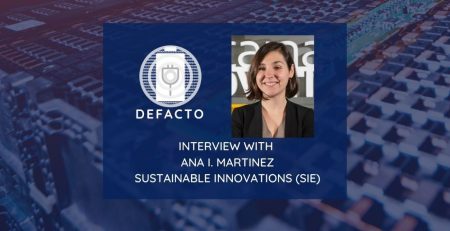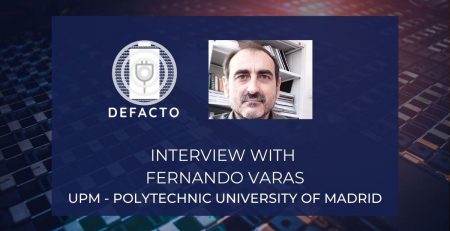Increasing the understanding of cell manufacturing processes to facilitate technology development – Interview with Fraunhofer ITWM
Dr. Jochen Zausch, from the Fraunhofer Institute for Industrial Mathematics ITWM, speaks on this interview about their role in the DEFACTO project, their expectations and the work they will carry out on modelling and simulation of cell performance and ageing mechanisms.
Q: What is the main role of Fraunhofer in DEFACTO?
A: At Fraunhofer, we are responsible to coordinate the work package on material and battery modeling. Since we actually contribute with two of our institutes (the Institute for Mechanics of Materials IWM and the institute for Industrial Mathematics ITWM) we cover two other main tasks: the IWM uses atomistic simulation methods based on density functional theory to predict basic electrochemical and mechanical properties of the electrode materials. This information can be used by ITWM as input for its modelling and simulation activities: here we are working on the coupling of continuum scale electrochemical battery models with continuum mechanics models. Besides this main activity, ITWM also contributes to models and methods to describe the electrolyte filling process.
Q: What are your expectations from the project?
A: Since we are working mainly on theoretical aspects of material and battery research we greatly enjoy the collaboration in such a big consortium with many different partners in order to discuss the topic from various perspectives, to profit from the partners’ competences (for example in experimental characterization) and to learn details of practical applications. Vice versa, we hope that by providing theoretical methods and by extending our computer simulation software BEST (Battery and Electrochemistry Simulation Tool) we can increase our understanding of processes and facilitate technology development. It will be great to see our work matter for practical applications and products.
Q: Can you talk a bit about the work you are planning to do on modelling and simulation of cell performance and ageing mechanisms?
A: Continuum models to compute the performance of lithium-ion batteries are around for already some years. However, the great challenge is not only to compute the “ideal” battery behavior but to increase realism by predicting how the battery properties change, i. e. the decrease of capacity due to aging over time. Since there are many possible aging mechanisms (also depending on the materials used) this is a complex task. In our contribution to DEFACTO we mainly concentrate on mechanical aging, which is caused by volume changes in the battery electrodes.
An important aspect of degradation effects is the fact, that they are triggered locally at some point within the porous electrode. Hence, the electrodes’ microstructures have a strong influence and should be considered by the models. This will be achieved by coupling and extending our two software tools: BEST (for the electrochemistry) and FeelMath (for the structural mechanics).
Micro-structure-resolving simulations are computationally expensive and require large computing time and memory resources. Therefore, based on the structure-resolving approach we will also derive a homogenized so-called pseudo-4d model (p4d), that is able to capture the degradation mechanisms correctly but is computationally much cheaper and will enter the simulation chain, that is developed within DEFACTO.
The aforementioned continuum models rely on a set of physical material properties (e. g. for ion transport, reactions, and mechanics) that even partly depend on the state-of-charge. Using atomistic simulations methods we will compute the necessary input based on first principles density functional theory. This way we hope to reduce the need for sophisticated parametrization experiments. Furthermore, the methods are applied to shed light on the underlying mechanisms of interfacial and degradation phenomena.












Leave a Reply